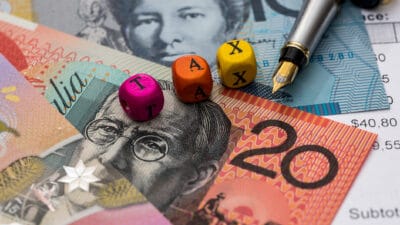If you want to generate $1,000 a month in passive income then I think dividends from shares are the answer.
ASX shares in-particular have a good income advantage because of franking credits which refunds tax paid by Australian companies to Aussie taxpayers as a tax credit, which boosts the yield on offer.
How much do you need to make $1,000 a month in dividends from shares?
Our job income is the most important source of earnings until we retire. It's much easier to get work income than build up enough money to make thousands of dollars in dividends.
But compound interest and diligent saving can build up an impressive nest egg. Receiving $1,000 a month in dividends is obviously $12,000 a year.
How big of a nest egg you need will depend on what you invest in and the dividend yields those shares have. If your portfolio has a 10% dividend yield then you'd 'only' need $120,000. But, high yields are riskier and/or probably won't grow much over time.
If your portfolio has a 6% dividend yield you'd need $200,000. A 6% yield is still high and today's ultra-low interest rates mean there aren't many good shares left with yields above 6%.
If the portfolio has a 4% dividend yield you'd need a portfolio of $300,000.
The above numbers exclude the implications of income tax – every reader will have a different tax situation, but unless you need income it might be unwise to choose very high yields because you may be giving some of your returns to the tax man for no real benefit.
How to grow a portfolio worth $120,000 to $300,000
The share market has historically produced returns of 10% per annum over the long-term. So that may be a decent number to use in any calculations, although returns from today's highly-priced market may be a little lower.
If you invest $1,000 a month it would take just over seven years to reach a portfolio of $120,000 growing at 10% per annum. To reach $300,000 it would take less than 14 years. Notice how the power of compound interest means $180,000 is added in the second period of seven years, but $120,000 is added in the first seven years.
Market-tracking investments like index exchange-traded funds (ETFs) will help you achieve what the market does. Some of the ideas in this space are iShares S&P 500 ETF (ASX: IVV), Vanguard MSCI Index International Shares ETF (ASX: VGS) and BetaShares Australia 200 ETF (ASX: A200).
However, investing in the best growth shares would hopefully help achieve your desired portfolio balance even quicker. In my opinion, some of the best ideas at the moment are Webjet Limited (ASX: WEB), Pushpay Holdings Ltd (ASX: PPH) and MFF Capital Investments Ltd (ASX: MFF).
Which shares would be good for dividend yields?
Depending on the yield you're looking for, here are some various ideas which have sustained or growing dividends:
Naos Emerging Opportunities Company Ltd (ASX: NCC) has a grossed-up dividend of 10%.
WAM Research Limited (ASX: WAX) has a grossed-up dividend of 9.25%.
WAM Leaders Ltd (ASX: WLE) has a grossed-up dividend yield of 6.4%.
Future Generation Investment Company Ltd (ASX: FGX) has a grossed-up dividend yield of 5.8%.
Rural Funds Group (ASX: RFF) has a distribution yield of 5.6%.
Viva Energy Reit Ltd (ASX: VVR) has a distribution yield of 5.4%.
Brickworks Limited (ASX: BKW) has a grossed-up dividend yield of 4.3%.








